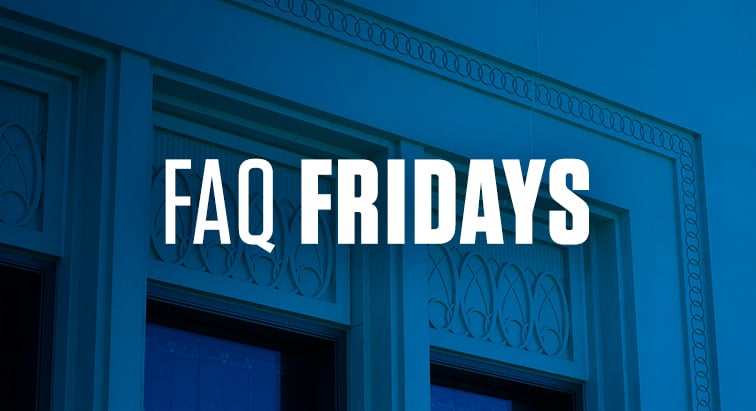Want quick responses to our most asked precast questions? Our blog series, “FAQ Fridays,” is designed to answer your most popular questions, organized by topic and product category. In Part 4 of this series, we discuss the basics of multi-hazard protection and precast performance.
Precast concrete is an especially durable building material that can withstand several hazards. The primary ingredients of concrete—sand, gravel, and cement—are mineral-based. When mixed with water, the cement reacts to create a crystalline matrix with high compressive strength. This matrix binds the sand and gravel together, making concrete. Unlike other construction materials that can rust, rot, or degrade when in the presence of moisture, concrete gets stronger if dehydrated cement particles are available to react with the water. Let’s explore various hazards that precast protects against, giving building owners and dwellers the confidence they deserve.
How Does Precast Concrete Withstand High Wind Events?
Precast concrete provides superior protection against severe weather events such as tornadoes, hurricanes, and floods. It’s often used in Federal Emergency Management Agency (FEMA) shelters and residential, institutional, public, government, and other structures requiring extra protection from the elements.
PCI tested various wall systems with the impact of a 2’ x 4’ wood stud traveling at 100 mph, the equivalent of wind-borne debris during a tornado with 250-mph winds. We demonstrate precast’s impact performance relative to other enclosure systems in the Impact Testing video.
How Does Precast Concrete Resist Blast Forces?
Precast concrete not only stands up to flames and heat, but it also can withstand extreme blast forces from explosive devices. The Air Force Research Laboratory performed blast testing of precast insulated sandwich wall panels in Panama City, Florida. This demonstrated how precast meets the limits as defined by the U.S. Army Corp PDC-TR 06-08 Single Degree of Freedom Structural Response Limits for Antiterrorism Design.
For more information, check out the MNL-141 PCI Blast-Resistant Design Manual, which is discounted for all PCI members, and see precast concrete’s blast resistance with your own eyes in a video on the Precast Concrete Blast Test.
How Does Precast Concrete Use Seismic Building Design?
A ten-year study by the Precast Seismic Structural Systems (PRESSS) Research Program produced three approaches to seismic design using precast concrete:
- Hybrid Post-Tensioned Precast Frame
Precast concrete beams are connected to multi-story columns by unbonded, post-tensioned strands that run through a duct in the center of the beam and the columns. Mild steel reinforcement is placed in ducts on the beam, which are sleeved through the column and grouted. The reinforcement yields alternately in tension and compression and provides energy dissipation, while the post-tensioned strands act as “rubber bands” that support the structure after the seismic event ends. There are no column corbels with the vertical shear resistance provided by the post-tensioning strand. The post-tensioning steel balances the mild steel reinforcement, recentering the frame after flexing. - Pretensioned Precast Frame
This incorporates multi-span beams cast with a partially de-bonded pre-tensioning strand set on the columns. The columns’ reinforcing steel extends through the sleeves inside the beams. Reinforcing bar splices ensure continuity above the beam. As the frame displaces laterally, the de-bonded strand remains elastic. While the system dissipates relatively less energy than other systems, it recenters the structure after a significant seismic event. Although the frame performs satisfactorily in tests, it can’t act as the sole seismic-force-resisting system in regions of high seismic risk. - Pretensioned Precast Frame (PRESSS Shear-Wall Design)
This method uses an innovative approach for anchoring and connecting jointed walls to lengthen the structural period and reduce the design-based shear forces. Gravity loads are mobilized to partially resist overturning from the lateral ground motions. The system also considers the behavior of the jointed shear-wall system when the wall lifts and rocks, along with its effect of design forces. Unbonded post-tensioning forces recenter the wall system when the load is removed with minimal residual drift after a design-level earthquake. Recentering is ensured by relating the elastic capacity of the post-tensioning system to the yield strength of the panel-to-panel connection. The shear wall is expected to displace laterally to approximately 2% of story drift under a design-level earthquake.
For more information, explore our case studies and project profiles, and watch PCI’s seismic resistance testing videos on Precast Structural Seismic System floor and roof assemblies and the Diaphragm Seismic Design Methodology.
Want to work with precast concrete in your upcoming projects? Explore helpful tools, detailed information on working with precast, and expert guidance to support your next project in our Solutions Center.





